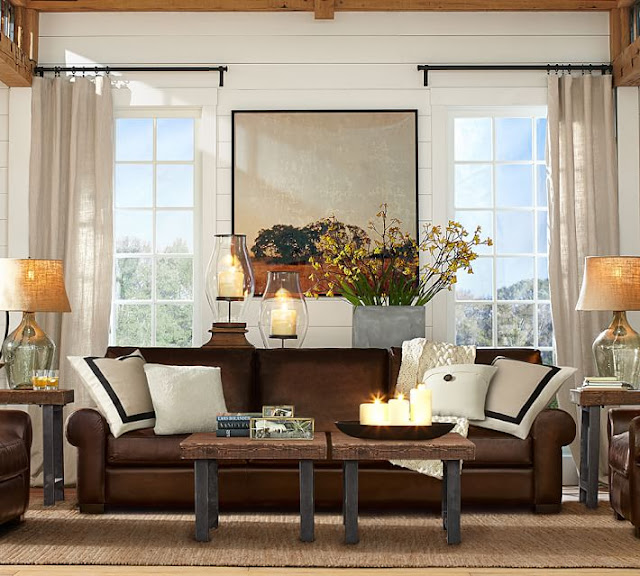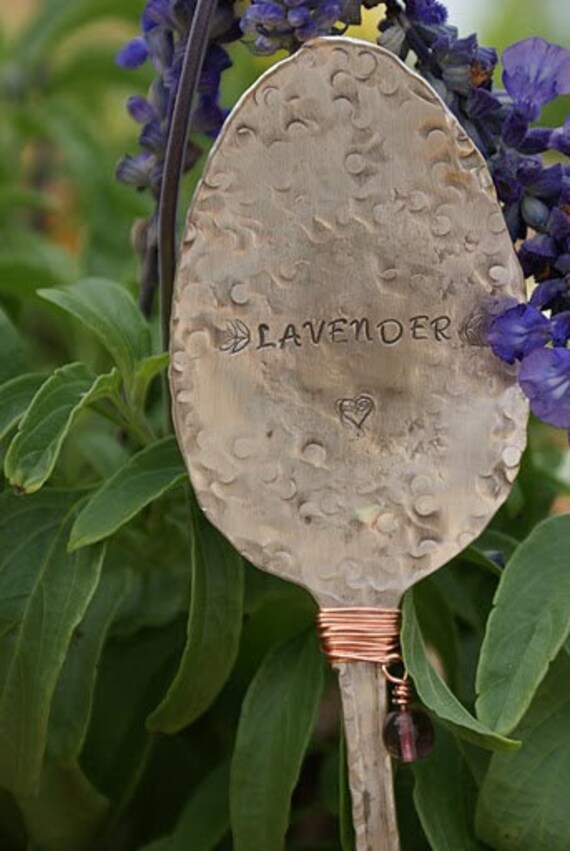I recently noticed subtle differences in the decorating around a leather sofa and it's interesting to note these slight differences can really impact the look. So my question to you is which do you prefer? The first one or the second one, or maybe the third one (lower on the page)? Or are you like me, would you combine elements of all of them and create a look that is more quintessentially you?
I love the double hurricane candle holders in the first picture, but not so much the vase of flowers. And in my house, all those pillows would end up on the floor as the husband and boys would find them too much. The coffee table really works for me and I like that you can keep books and magazines in the wire basket underneath. And yeah, I really really want those glass table lamps. (See close up photo below.) I love green Spanish glass and these really make me think of that.
 |
| Turner Rolled Arm Leather Sofa by Pottery Barn |
 |
| Turner Rolled Arm Leather Sofa by Pottery Barn |
The rug seems bolder in the second picture which is probably an illusion due to a closer frame up of the photo. What that does tell me is that in this setting I prefer a rug that is less bold. I like the picture in the second photo better than the first, so for my quintessential look I would swap that out. I would also swap out the sphere instead of the vase of flowers. Does the first picture feel more finished? It could be that the first picture feels more finished because it has a coffee table. However instead of one larger coffee table, maybe you like the look of two bunch tables instead. In this third picture of the same room, bunch tables replace the coffee table. And did you note that in this third example, they used my favorite of the two pictures? Yeah, you guessed it, this is my favorite look of the three...
 |
| Turner Rolled Arm Leather Sofa by Pottery Barn |
Or do you want a piece of furniture in front of your sofa?
Which leads to a consideration of designing for aging or handicapped individuals. Do we want the coffee table? Coffee tables and ottomans can be impediments to seating for those with canes, walkers or wheelchairs. If a family member is in a wheel chair, a coffee table may make the room less accessible even if they don't intend to sit on the sofa. A family member with a cane or walker may have difficult maneuvering around a coffee table to sit down on the sofa. If you are aging in place, have an aging parent living with you or if you have a family member with special needs you may opt to forgo a coffee table or ottoman. Decorate your home for your circumstance; it can still be beautiful and comfortable.
This blog has a focus towards rightsizing, making your home and life easier and more functional and looking to our future needs. As we rightsize or downsize, we may find that the traditional way that we decorate and furnish our rooms needs to change. We have to look at how to incorporate our current and future circumstances to make our homes functional. For instance, if you choose the bunch tables versus the larger coffee table, you could always relocate one of the two tables and provide easy access to half of the sofa.
Keep in mind that carpet and area rugs can make walking/moving more difficult for wheelchairs, walkers or a person with a cane. Thick plush carpets, although nice to sink your bare feet into, can trip up an elderly parent or even yourself. Tripping and falling are common household injuries. Hard surfaces and low pile rugs are easier to move a walker or wheelchair on. If you have area rugs be sure to tape the edges down to reduce the chances of someone tripping on the edge. It may still happen, but the goal is to reduce the chances.
And those lamps that I feel in love with? Here's a close up look. I love the handblown glass with a rustic burlap shade.
 |
| Pottery Barn Clift Lamp with Burlap Drum Shade in Natural |











